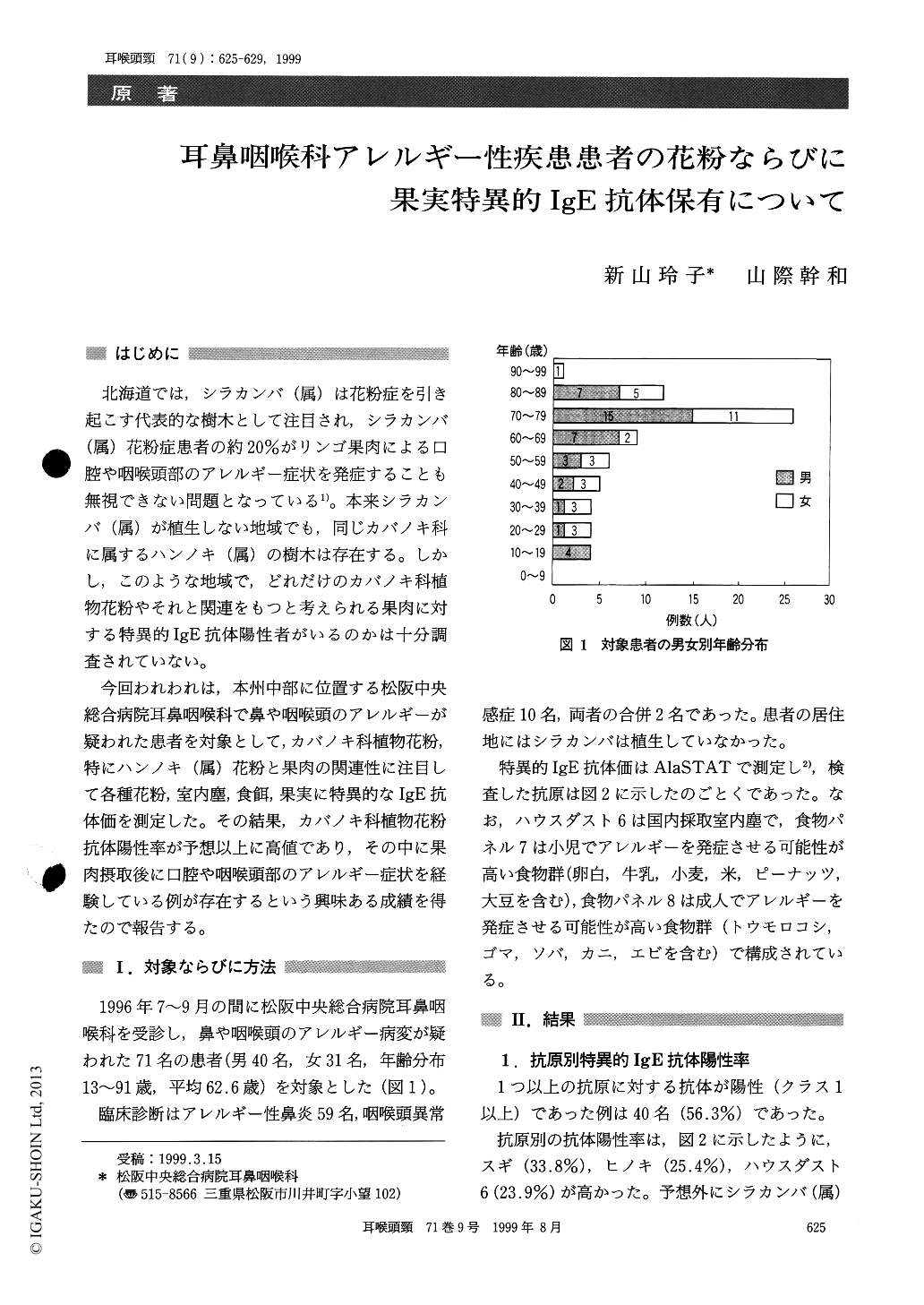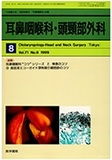Japanese
English
- 有料閲覧
- Abstract 文献概要
- 1ページ目 Look Inside
はじめに
北海道では,シラカンバ(属)は花粉症を引き起こす代表的な樹木として注目され,シラカンバ(属)花粉症患者の約20%がリンゴ果肉による口腔や咽喉頭部のアレルギー症状を発症することも無視できない問題となっている1)。本来シラカンバ(属)が植生しない地域でも,同じカバノキ科に属するハンノキ(属)の樹木は存在する。しかし,このような地域で,どれだけのカバノキ科植物花粉やそれと関連をもつと考えられる果肉に対する特異的IgE抗体陽性者がいるのかは十分調査されていない。
今回われわれは,本州中部に位置する松阪中央総合病院耳鼻咽喉科で鼻や咽喉頭のアレルギーが疑われた患者を対象として,カバノキ科植物花粉,特にハンノキ(属)花粉と果肉の関連性に注目して各種花粉,室内塵,食餌,果実に特異的なIgE抗体価を測定した。その結果,カバノキ科植物花粉抗体陽性率が予想以上に高値であり,その中に果肉摂取後に口腔や咽喉頭部のアレルギー症状を経験している例が存在するという興味ある成績を得たので報告する。
Using A1aSTAT method, we evaluated hypersen-sitivity to 9 air-borne and 6 food allergens in 71 patients (40 males and 31 females with an average age of 62.6 years) who suspected to have allergicreaction in the nose and throat. Incidence of cedar pollen positive patients (33.8%) was highest and followed by those of cypress pollen positive (25.4%) and house dust positive (23.9%). On the other hand, melon showed the highest positive rate (22.5%) among food aller-gens.
Two out of 11 alder-pollen positive patients had experienced oral allergy symptoms caused by some fruits. This fact indicates that alder pollen and fruit allergens have cross-reaction.

Copyright © 1999, Igaku-Shoin Ltd. All rights reserved.


